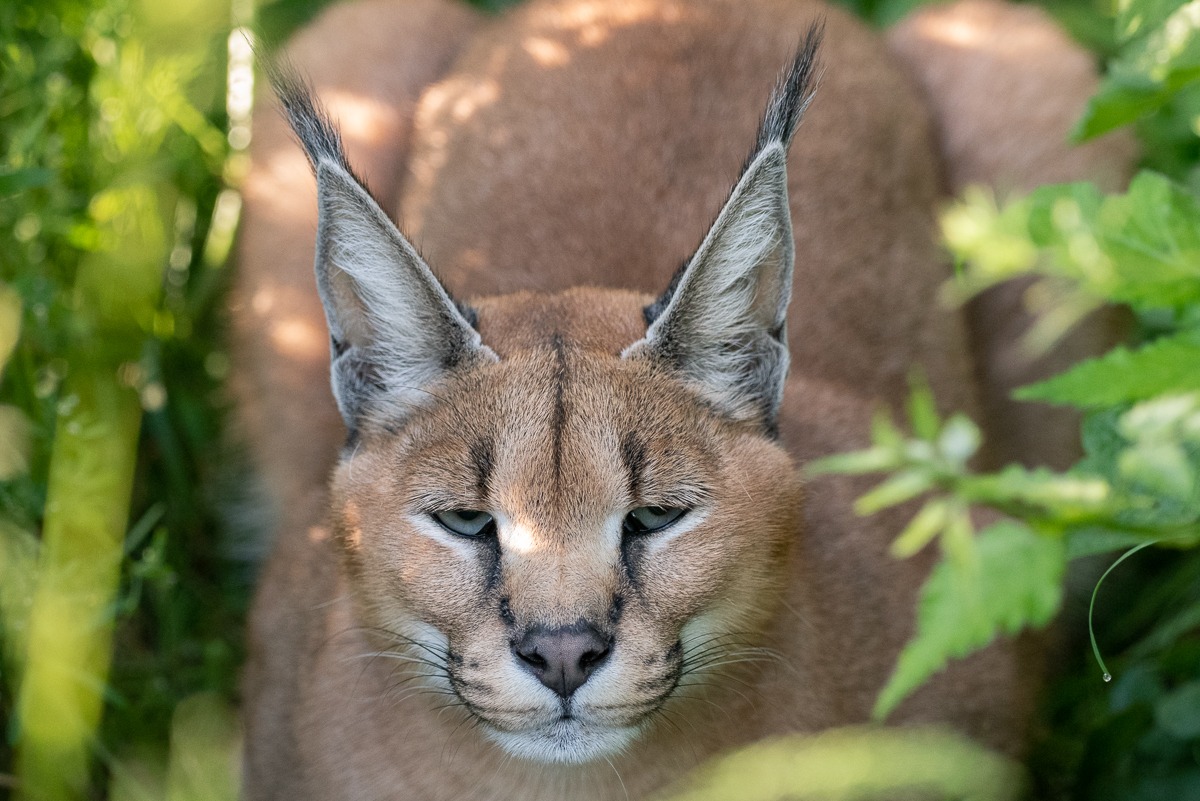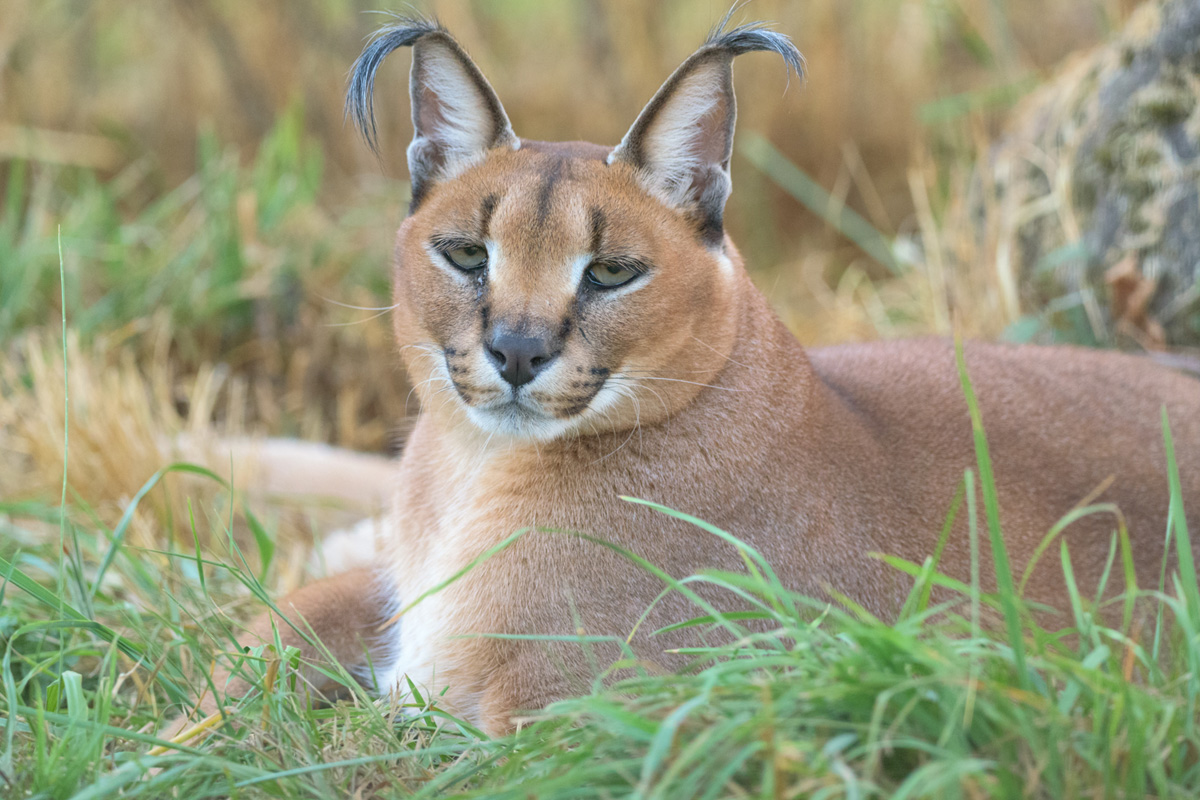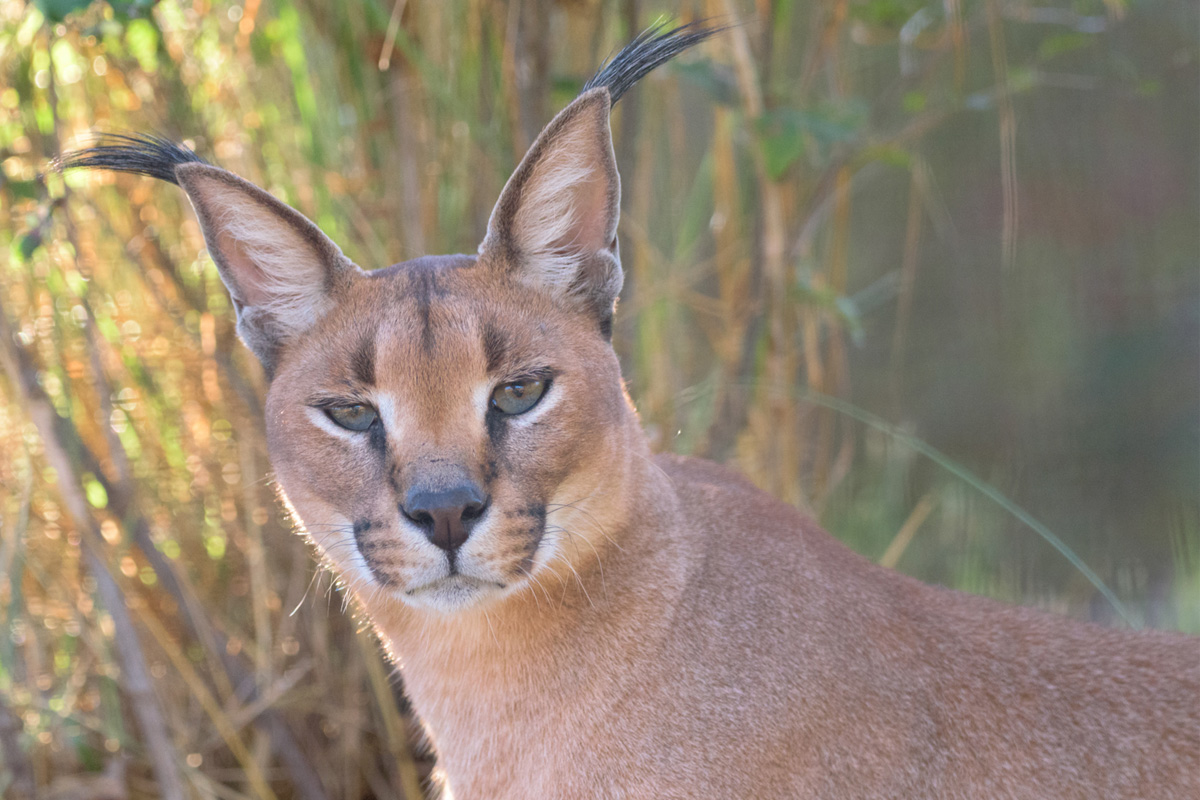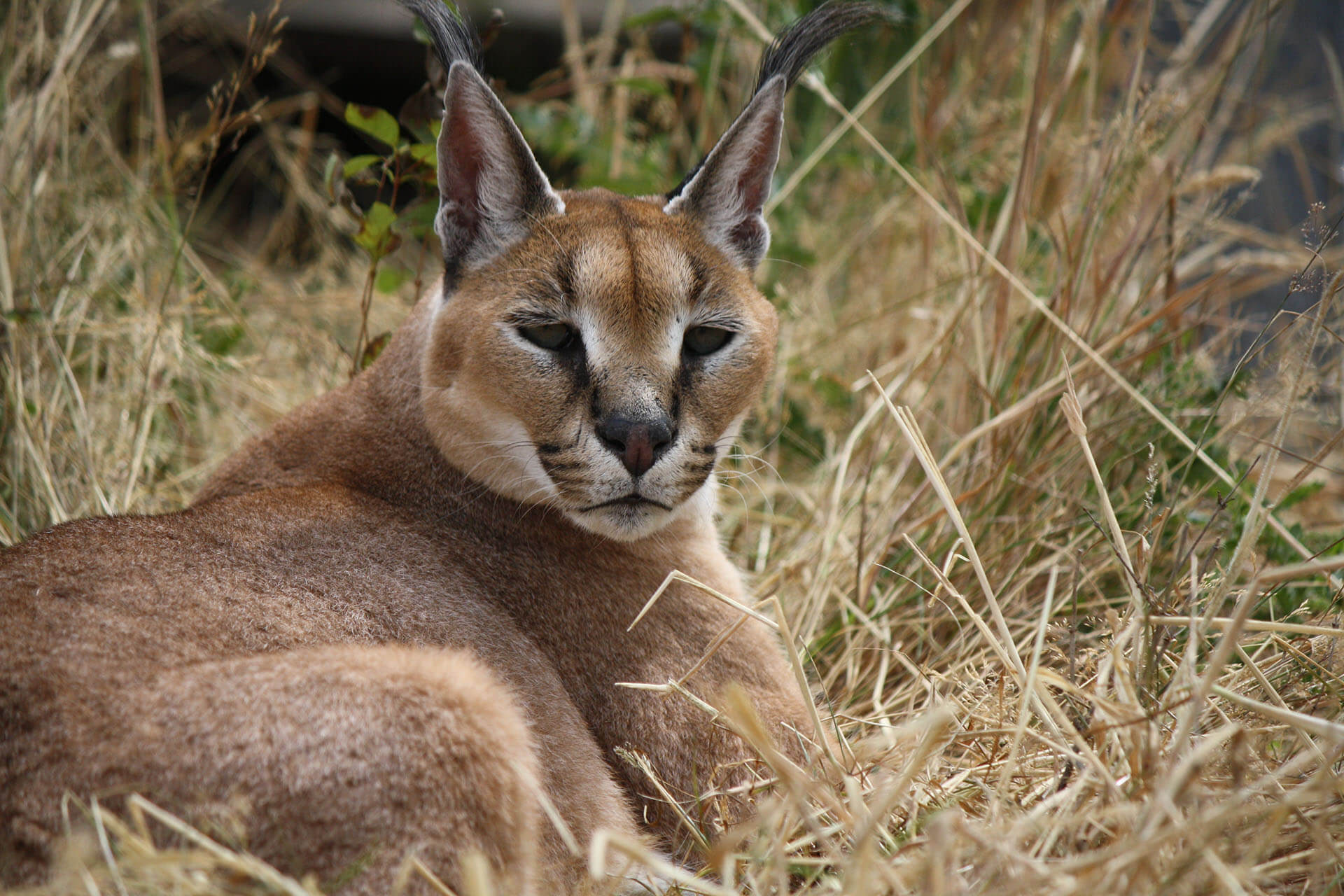Caracals
The caracal is a fiercely territorial medium sized cat ranging over Western Asia and Africa. The word caracal comes from the Turkish word “karakulak”, meaning “black ear”. Although it has traditionally had the alternative names Persian Lynx, Egyptian Lynx, and African Lynx, it is no longer considered to be an actual lynx. Instead, it is now believed to be closely related to the African golden cat and the serval.
The caracal is a slender yet muscular, cat, with long legs and a short tail which is not quite a third of its body length. Males typically weight between 30 and 40 pounds, while females weight at least 24 pounds. The color of the caracal’s fur varies between wine-red, grey, and sand colored. Young caracals bear reddish spots on their underside. Adults do not have markings except for black spots above their eyes and small white patches around their eyes and nose. The underside of the caracal’s chin and body are white, and a narrow black line runs from the corner of its eye to its nose.
The caracal’s life expectancy is around 12 years in the wild and up to 17 years in captivity.
Did you know?
The caracal’s powerful hind legs allow it to leap more than 10 ft. in the air and can catch a bird in flight.
The caracal had religiously significant in the Egyptian culture,and caracal sculptures were used to guard the tombs of pharaohs.
Caracals communicate with each other by moving their head from side to side so that the ear tufts flicker rapidly
The caracal posses tremendous speed and agility and uses its speed to chase down hares and small antelopes.
The caracal territories range up to 85 square miles.
Caracals sometimes stash their prey in trees for a later meal.
In Persia and India, caracals were once used to hunt birds for sport.
The caracal is superbly adapted for life in arid environments and requires very little water, getting adequate supplies from its food.




